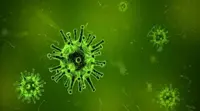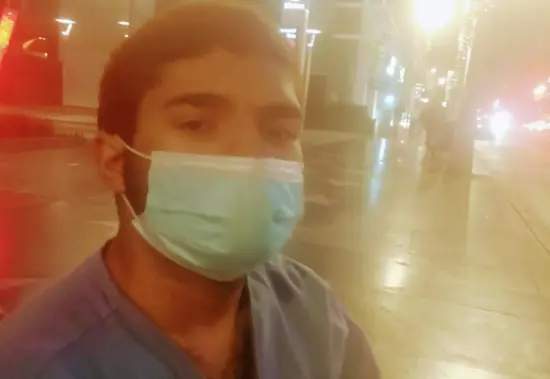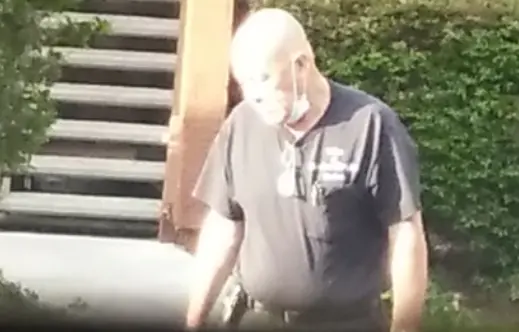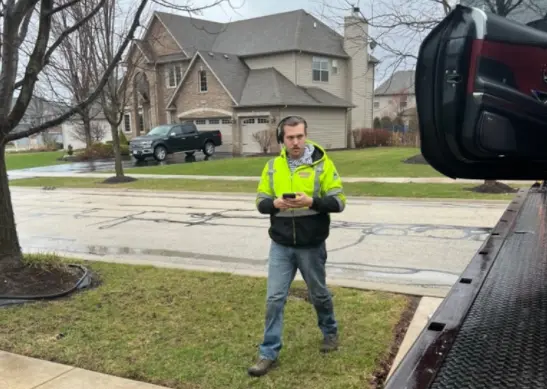Complaint Review: Everclear Cattery - Sacramento California
- Everclear Cattery 6231 Drifter Dr. San Jose, California 95123 Sacramento, California U.S.A.
- Phone: 408-309-4077
- Web:
- Category: Animal Abuse
Everclear Cattery sold me a sick kitten and did not honor health guarantee San Jose, And Sacramento California
*REBUTTAL Owner of company: MISLEADING
Jennifer Brix sold me a sick kitten in 11-07. When my kitten was diagnosed with FIP... he had to be put down in 4-08.She refused to honor the health guarantee she had signed and given to me.
She would not answer any email, phone calls or accept any mail from me. She had no intentions of replacing the kitten.
She since then has sold kittens on line and they are from the same colony has my kitten.
Beware of her. She is dishonest and not trustworthy or selling you a healthy kitten. All she is concerned about it the money. I hope to spare one person this horrific experience. I am still very sad about this awful experience.
Sylvia
san jose, California
U.S.A.
This report was posted on Ripoff Report on 08/20/2008 06:10 PM and is a permanent record located here: https://www.ripoffreport.com/reports/everclear-cattery/sacramento-california/everclear-cattery-sold-me-a-sick-kitten-and-did-not-honor-health-guarantee-san-jose-and-s-365128. The posting time indicated is Arizona local time. Arizona does not observe daylight savings so the post time may be Mountain or Pacific depending on the time of year. Ripoff Report has an exclusive license to this report. It may not be copied without the written permission of Ripoff Report. READ: Foreign websites steal our content
If you would like to see more Rip-off Reports on this company/individual, search here:
#1 REBUTTAL Owner of company
MISLEADING
AUTHOR: Everclear - (U.S.A.)
SUBMITTED: Thursday, September 04, 2008
Our cats are part of our family and we go to great legnths to insure they are well cared for and loved. All our cats are vet checked regularly. We have never had FIP or any disease in our household. Our cats are guaranteed to be disease free. We do not know who she exposed her kitten to where he would have contacted this disease. We did offer a replacement kitten when one became available, she agreed then changed her mind.
She needs to be more educated on the facts before making false accusations.
NO TEST ~ There still is no definitive test to diagnose FIP. Nor is any affordable test to determine presence of Corona virus commerically available to breeders. Current tests (titers) merely show us footprints of where a Corona virus has been. Tragically many cats, even healthy ones have been wrongly diagnosed and euthanized based on a positive result of a Corona titer!
What is FIP?
It is found worldwide and affects not only domestic cats, but many wild ones as well, including cougars, bobcats, lynx, lions, and cheetahs.
How common is FCoV infection and the development of FIP in cats?
Studies have shown that approximately 25-40% of household cats, and up to 95% of cats in multi-cat households and catteries are or have been infected with FCoV. The development of fatal FIP occurs in 1 in 5000 cats in households with one or two cats. In multi-cat households and catteries only 2% - 3% of cats exposed to FIP die from FIP.
What causes FIP?
FIP is caused by a virus. Cats can be infected with feline coronavirus (FCoV). There are two types of this virus which cannot be distinguished from each other in laboratory tests. One is avirulent (does not cause disease) or only mildly virulent and is called feline enteric coronavirus (FECV). Infection with this virus does not produce any signs other than maybe a very mild diarrhea. The other type is virulent (produces disease), is the cause of FIP, and is called feline infectious peritonitis virus (FIPV). It is believed that FIP occurs when FECV mutates to FIPV in the cat and starts to replicate in the cat's cells. What causes this mutation is unknown.
FCoV can live in the environment 3-7 weeks. After 3 weeks, however, the number of virus particles present is probably too small to cause infection. Most household disinfectants will kill the virus.
How does the virus cause disease?
When a cat is exposed to FCoV, four things can happen, depending on a number of factors including age, health status, and strength of the cat's cellular immune system. The strain and dose of the virus can also influence the outcome.
Mammals' immune systems can be divided into two parts: the antibody-producing part, and the part in which cells kill invaders through direct contact or chemicals they produce. It is this second part of the immune system, the cellular immune system which plays a very important role in determining the result of exposure to FCoV.
If a cat's cellular immunity is very strong, the cat can usually fight off the infection.
If a cat's cellular immunity is moderately strong, the cat may be unable to kill all the virus, but is able to keep it in check. This results in a "latent" infection. If the cat is severely stressed or becomes ill from other diseases, the latent infection can be reactivated and the cat can develop FIP.
If a cat's cellular immunity is relatively weak, the virus continues to multiply slowly, FIPV becomes the predominant virus and FIP develops. In this form of disease, called "dry FIP" nodular lesions called granulomas slowly develop in one or multiple places in the body.
The damage to the body from FIPV is not so much due to the virus itself, but to the body's response to it. Complexes of FIPV and antibodies the cat produces against it are deposited on the walls of blood vessels. Macrophages, which are cells that eat cellular debris and foreign material, consume the virus and the virus replicates inside these cells. These macrophages are also deposited along blood vessels and in tissues. When they accumulate in large numbers they can form granulomas.
Which cats are more likely to develop FIP?
As you would imagine, the cats most likely to develop FIP are those with the weakest immune systems. This includes kittens, cats infected with feline leukemia virus (FeLV), and geriatric cats.
We rarely see FIP in cats between 3 and 10 years of age. However, starting at 10-12 years of age, the immune systems of these older cats apparently decline, making them more susceptible.
FIP has been shown to be more common in certain breeds and lines. It appears to be more common in Persians, for example. It is unclear whether these breeds are more susceptible because of their genetics.
What are the laboratory findings in FIP?
Chemistry Panels: Chemistry panels are used to assess the function of the liver and kidneys. If the kidney is involved, or the cat is dehydrated, we can see elevations in creatinine and BUN. These compounds are eliminated from the body by the kidneys. If they are elevated, the kidneys are not adequately filtering the blood. Liver enzymes including alanine transaminase and alkaline phosphatase are elevated when liver damage has occurred, and bilirubin will increase if the liver is not functioning normally.
One of the most common abnormalities is an increase in serum protein to levels over 7.8 g/dl. Most of the increase is caused by elevations in certain proteins called globulins (the other major serum protein is albumin). Spinal fluid also has an elevated protein level.
The abdominal fluid in cats with wet FIP is high in protein (5-12g/dl), yellow, viscous, froths when shaken, and may clot when exposed to air.
Complete Blood Count: A complete blood count may help to support a diagnosis of FIP. Many cats will have a mild to moderate anemia. Initially, the white blood cell count is low, but increases later in the disease. The increase is due to an increase in the type of white blood cells called neutrophils. These are scavenger-type cells. There is actually a decrease in the type of blood cells called lymphocytes. This can be important in determining the diagnosis.
FIP Testing: A test that detects antibody to FCoV is available. This test can NOT differentiate between FECV and FIPV. The test result is reported as a "titer." A titer of 1:100 means we still get a positive reaction after diluting the serum sample 1:100. It has been found that a high titer alone does not mean a cat has FIP. A high titer could mean:
The cat was exposed to FCoV (either FECV or FIPV) and has eliminated the virus
The cat was exposed to FCoV and is a carrier
The cat was recently vaccinated against FIP
The cat was exposed to FCoV and has developed FIP
A negative test could mean:
The cat has not been exposed to FECV or FIPV
The cat is infected with FIPV but is so early in the disease process antibody is not yet detectable
The cat is infected with FIPV but can no longer make antibody
The cat is infected with FIPV but all the antibody that is made is bound in complexes to FIPV and is not detected by the test
The test was not sensitive enough to detect the antibody present
How is FIP diagnosed?
Because we can not rely totally on the antibody test for a diagnosis, we must combine the history, clinical signs, laboratory results, FCoV test result, and possibly radiographs to come to a "probable" diagnosis. The only way to be absolutely sure of an FIPV infection is to biopsy affected tissues and have them examined by a veterinarian pathologist. As a result, most often the diagnosis is made after the cat has died, a postmortem examination has been performed and tissues have been examined.
In an attempt to try to make the best diagnosis we can while the cat is still alive, we can follow these criteria for a cat with clinical signs of FIP:
The cat has a low number of lymphocytes: 1.5x103 cells/l.
The cat has a positive FCoV test result (titer > 1:160).
The cat has elevated globulins in his blood > 5.1 gm/dl.
If the cat meets all three criteria, the probability the cat has FIP is 88.9%. If the cat does NOT meet all three criteria, the probability the cat does NOT have FIP is 98.8%.
Research is ongoing to find other immunosuppressive drugs that may slow down the course of the disease. Attempts are also being made to find antiviral drugs that will kill or slow down the replication of the virus.
Using the FIP test to identify potential carriers or immune animals is NOT possible.
References and Further Reading
American Association of Feline Practitioners and Academy of Feline Medicine Advisory panel on Feline Vaccines. 1998 report of the American Association of Feline Practitioners and Academy of Feline Medicine Advisory panel on Feline Vaccines. Journal of the American Veterinary Medical Association 1998;212(2):227-241.
Barr, MC; Olsen, CW; Scott, FW. Feline viral diseases. In Ettinger, SJ; Feldman EC (eds.): Textbook of Veterinary Medicine. W.B. Saunders Co. Philadelphia, PA; 1995;409-435.
Brunt, JE; Hoskins, JD; Lutz, H; Norsworthy, GD. Feline infectious peritonitis. Supplement to the Compendium on Continuing Education for the Practicing Veterinarian. 1995;4-16.
Evermann, JF; Henry, CJ; Marks, SL. Feline infectious peritonitis. Journal of the American Veterinary Medical Association. 1995;206(8):1130-1134.
Fehr, D; Holznagel, E; Bolla, S; et. Al. Placebo-controlled evaluation of a modified live virus vaccine against feline infectious peritonitis: Safety and efficacy under field conditions. Vaccine. 1997;15(10):1101-1109.
Scott, FW. Feline infectious peritonitis. In Tilley, LP; Smith, FWK (eds.) The 5 Minute Veterinary Consult. Williams and Wilkins. Baltimore, MD; 1997;586-7.
Hoskins, JD. Update on Feline coronavirus disease. In August, JR (ed.) Consultations in Feline Internal Medicine. W.B. Saunders Co. Philadelphia, PA; 1997;44-50.
McReynolds, C; Macy, D. Feline infectious peritonitis. Part I. Etiology and Diagnosis. Compendium of Continuing Education for the Practicing Veterinarian. 1997;19(9):1007-1016.
Pedersen, NC; Addie, D; Wolf, A. Recommendations from working groups of the International Feline Enteric Coronavirus and Feline Infectious Peritonitis Workshop. Feline Practice. 1995;23(3):108-111.
Sherding, RG. Feline infectious peritonitis. In Birchard, SJ; Sherding, RG (eds.) Saunders Manual of Small Animal Practice. W.B. Saunders Co. Philadelphia, PA; 1994;94-99.
Stoddart, ME; Bennett, M. Feline coronavirus infection. In Chandler, EA; Gaskell, CJ; Gaskell, RM (eds.) Feline Medicine and Therapeutics. Blackwell Scientific Publications. 1994;506-514.
Owned & Operated by Practicing Veterinarians
--------

Advertisers above have met our
strict standards for business conduct.




































